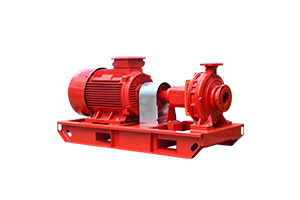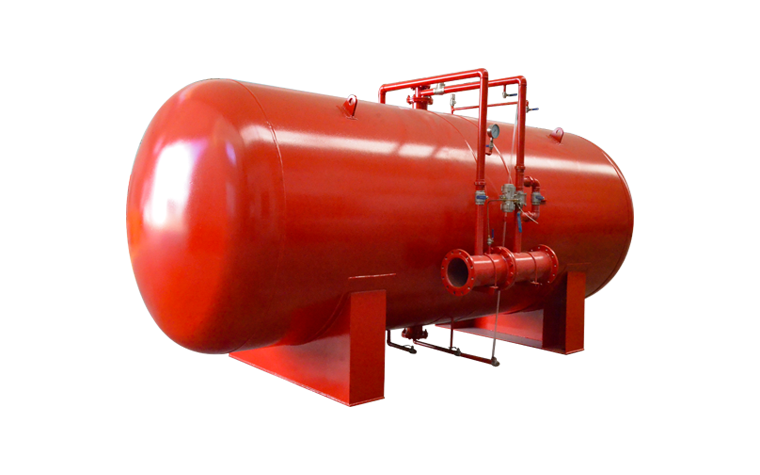-
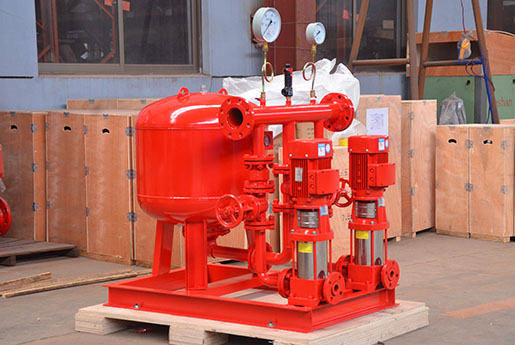 Jul 11, 2023How to deal with the high-pressure fire pump power failure?Dealing with a power failure in a high-pressure fire pump requires prompt action to ensure the continuity of fire protection. Here are the steps to follow in such a situation:
Jul 11, 2023How to deal with the high-pressure fire pump power failure?Dealing with a power failure in a high-pressure fire pump requires prompt action to ensure the continuity of fire protection. Here are the steps to follow in such a situation:
Notify Authorities: Immediately inform the relevant authorities, such as the fire department or emergency response team, about the power failure in the fire pump. They should be aware of the situation and be ready to provide assistance if needed.
Activate Emergency Power Source: If your facility has an emergency power source, such as a backup generator or an uninterruptible power supply (UPS), activate it as soon as possible. These emergency power sources are designed to provide electricity during power outages and can help maintain the operation of critical systems, including the fire pump.
Verify Power Supply: Check the power supply to the fire pump to ensure that the failure is not isolated to the pump itself. Examine the circuit breakers, fuses, or any other protective devices associated with the pump's electrical connection. If the problem is localized to the fire pump, proceed to the next steps.
Manual Start Option: Some fire pumps have a manual start option that allows you to initiate the pump's operation manually in the event of a power failure. Refer to the pump's operating manual or consult with the manufacturer to determine if this feature is available and how to use it. Follow the instructions to manually start the pump.
Alert Firefighters or Personnel: Notify the firefighting team or designated personnel about the power failure in the fire pump. Inform them of the situation and any alternative measures being taken, such as activating emergency power or initiating manual pump operation. Coordinate with them to ensure appropriate firefighting measures are implemented.
Implement Secondary Water Supply: If the power failure persists or if there is no backup power available, establish an alternative water supply for firefighting purposes. This may involve connecting to an external water source, such as a hydrant, or utilizing onsite water reserves like fire water storage tanks or auxiliary water pumps. Ensure that the secondary water supply is accessible and operational.
Monitor and Assess: Continuously monitor the situation and assess the effectiveness of the alternative measures being implemented. Keep the authorities and relevant personnel informed about the status of the fire pump and any developments. Adjust the firefighting strategies and resources as needed to maintain fire protection capabilities.
Restore Power and Repair: Once the power is restored, or if repairs to the pump or electrical system are required, take the necessary actions to address the root cause of the power failure. Engage qualified personnel or technicians to troubleshoot and rectify the electrical issue. Conduct any necessary repairs or maintenance to ensure the fire pump is fully operational again.
It's crucial to consult with fire protection professionals, local authorities, and adhere to applicable codes and standards when dealing with high-pressure fire pump power failures. They can provide specific guidance based on the unique circumstances and requirements of your facility.
View details -
 Jul 11, 2023Energy consumption analysis of fire pumpAnalyzing the energy consumption of a fire pump involves assessing the power requirements and operational characteristics of the pump. Here are the steps to conduct an energy consumption analysis:
Jul 11, 2023Energy consumption analysis of fire pumpAnalyzing the energy consumption of a fire pump involves assessing the power requirements and operational characteristics of the pump. Here are the steps to conduct an energy consumption analysis:
Determine Power Rating: Identify the power rating of the fire pump, usually specified in horsepower (HP) or kilowatts (kW). This information is typically provided by the manufacturer and can be found in the pump documentation or nameplate.
Assess Duty Cycle: Understand the expected duty cycle of the fire pump. Duty cycle refers to the frequency and duration of pump operation. In some cases, fire pumps may run continuously, while in others, they may operate intermittently or only during specific events.
Calculate Power Consumption: Determine the average power consumption of the fire pump by multiplying its power rating by the duty cycle. For example, if a 100 HP fire pump runs continuously, the power consumption would be 100 HP. If it runs for 1 hour out of every 24 hours, the power consumption would be (100 HP / 24 hours) = 4.17 HP.
Consider Efficiency: Assess the efficiency of the fire pump. Pump efficiency indicates how effectively the pump converts input power into hydraulic power. Efficiency can vary based on the pump type, design, and operating conditions. Check the pump documentation or consult with the manufacturer for the pump's efficiency information.
Calculate Actual Power Consumption: Multiply the power consumption calculated in step 3 by the pump's efficiency to determine the actual power consumed by the pump. For example, if the pump efficiency is 80%, the actual power consumed would be (4.17 HP * 0.8) = 3.34 HP.
Determine Energy Consumption: To calculate the energy consumption of the fire pump, multiply the actual power consumption by the time of operation. For example, if the pump runs for 10 hours, the energy consumption would be (3.34 HP * 10 hours) = 33.4 HP-hours or kilowatt-hours (kWh).
Compare and Analyze: Compare the energy consumption of the fire pump with other electrical equipment or systems to gain a perspective on its energy usage. Assess the efficiency of the fire pump and identify opportunities for energy optimization, such as selecting a more efficient pump or implementing control strategies to minimize unnecessary operation.
Remember that this analysis provides an estimate of the fire pump's energy consumption based on the available information. The actual energy consumption may vary depending on various factors, including pump design, operating conditions, and system requirements.
View details -
 Jul 10, 2023Fire pump maintenanceRegular maintenance of fire pumps is crucial to ensure their reliable performance during emergencies. Here are some key maintenance tasks for fire pumps:
Jul 10, 2023Fire pump maintenanceRegular maintenance of fire pumps is crucial to ensure their reliable performance during emergencies. Here are some key maintenance tasks for fire pumps:
Follow manufacturer guidelines: Refer to the manufacturer's manual or documentation for specific maintenance requirements and schedules for your fire pump model. Manufacturers often provide detailed instructions for maintenance procedures.
Inspect regularly: Conduct regular visual inspections of the fire pump, including the motor, control panel, and associated components. Look for signs of wear, damage, leaks, or loose connections.
Test performance: Periodically test the performance of the fire pump to ensure it meets the required specifications. This includes flow tests, pressure tests, and functional tests of alarms and controls. Follow local regulations and standards for testing frequencies.
Lubrication: Proper lubrication is essential for the smooth operation of the fire pump. Follow the manufacturer's recommendations for lubrication intervals and use the recommended type of lubricant.
Check and clean suction strainer: Inspect and clean the suction strainer or screen regularly to prevent clogging and ensure proper water intake. Remove any debris, sediment, or other obstructions that may affect pump performance.
Verify suction and discharge valves: Check the operation of suction and discharge valves to ensure they are fully open and not stuck or blocked. Repair or replace any faulty valves.
Test and maintain batteries: If your fire pump relies on batteries for backup power, regularly test and maintain them according to manufacturer recommendations. This includes checking battery voltage, replacing expired batteries, and ensuring proper charging.
Inspect and clean cooling system: If the fire pump has a cooling system, such as a radiator or heat exchanger, inspect it regularly for cleanliness and proper functioning. Clean or replace filters as needed.
Monitor vibrations and noise: Pay attention to any unusual vibrations or noise coming from the fire pump during operation. Excessive vibrations or abnormal sounds may indicate a problem that needs attention.
Keep records: Maintain accurate records of all maintenance activities, including inspections, tests, repairs, and replacements. This documentation can help track the pump's performance, identify recurring issues, and ensure compliance with regulations.
Professional servicing: Schedule periodic maintenance visits from qualified technicians or fire pump service providers. They can conduct more in-depth inspections, perform specialized tests, and address any complex issues.
Remember, it's important to adhere to local regulations, industry standards, and the manufacturer's guidelines for fire pump maintenance. This will help ensure the pump's reliability and compliance with safety requirements.
View details -
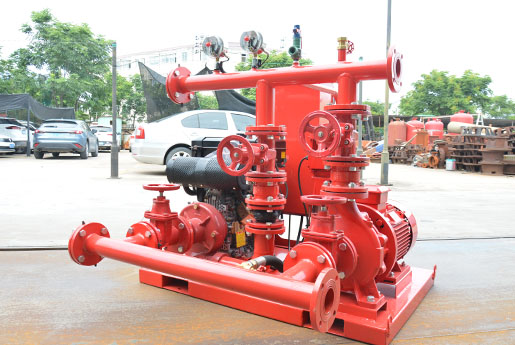 Jul 10, 2023How to solve the common faults of fire pumps?Fire pumps play a crucial role in fire protection systems by supplying water or fire-retardant liquids at high pressure. To solve common faults of fire pumps, it's important to follow a systematic troubleshooting approach. Here are some general steps you can take:
Jul 10, 2023How to solve the common faults of fire pumps?Fire pumps play a crucial role in fire protection systems by supplying water or fire-retardant liquids at high pressure. To solve common faults of fire pumps, it's important to follow a systematic troubleshooting approach. Here are some general steps you can take:
Identify the issue: Determine the specific fault or problem with the fire pump. This can include issues like low pressure, no pressure, excessive vibration, abnormal noise, or failure to start.
Check power supply: Ensure that the fire pump is receiving adequate power supply and that all electrical connections are secure. Check for any blown fuses or tripped circuit breakers.
Verify suction conditions: Check the suction side of the pump for any obstructions, such as debris, clogged strainers, or closed valves. Inspect and clean the suction line if necessary.
Inspect discharge conditions: Check the discharge side of the pump for any blockages, closed valves, or leaks. Make sure that all valves in the discharge line are fully open.
Check for air leaks: Air leaks can cause reduced pump performance. Inspect the pump and associated piping for any signs of leaks, such as hissing sounds or water puddles.
Examine impeller and casing: Inspect the impeller and casing for damage, wear, or corrosion. If necessary, clean or replace the impeller and repair any damaged components.
Test pressure switches and sensors: Check the functionality of pressure switches and sensors that control the pump's operation. Ensure they are properly calibrated and functioning correctly.
Review motor operation: Verify that the motor driving the pump is operating correctly. Check for any issues like overheating, excessive noise, or mechanical problems.
Inspect and test controls: Check the control panel and associated electrical components for faults. Test control switches, relays, and other devices to ensure they are functioning as intended.
Refer to manufacturer documentation: Consult the manufacturer's manual or technical documentation specific to your fire pump model for troubleshooting guidance and recommended maintenance procedures.
Seek professional assistance: If you are unable to identify or resolve the issue, it is advisable to contact a qualified fire pump technician or the pump manufacturer's service team for further assistance.
Remember, fire pump maintenance and troubleshooting should be performed by trained professionals to ensure the safety and effectiveness of the fire protection system.View details -
.jpg) Jul 07, 2023Precautions for fire pump installationProper installation of fire pumps is crucial to ensure their reliable and effective operation in emergency situations. Here are some precautions to consider during fire pump installation:
Jul 07, 2023Precautions for fire pump installationProper installation of fire pumps is crucial to ensure their reliable and effective operation in emergency situations. Here are some precautions to consider during fire pump installation:
Compliance with Codes and Standards: Ensure that the fire pump installation adheres to relevant local, national, and international codes and standards, such as the National Fire Protection Association (NFPA) standards, building codes, and manufacturer's guidelines. Compliance with these regulations helps ensure the safety and effectiveness of the fire protection system.
Adequate Space and Accessibility: Provide sufficient space around the fire pump for easy access, maintenance, and repair activities. Consider factors such as clearance requirements, ventilation, and proper drainage. Accessibility is essential to facilitate inspections, testing, and maintenance without hindrances.
Proper Location: Install the fire pump in a suitable location that meets the specific requirements of the fire protection system. Consider factors such as proximity to water sources, protection from environmental elements, ease of connection to the fire sprinkler system, and accessibility for firefighting personnel.
Foundation and Anchoring: Ensure that the fire pump is mounted on a sturdy and stable foundation that can withstand the vibrations and loads generated during operation. The pump should be securely anchored to prevent movement or shifting.
Piping and Connections: Follow the manufacturer's guidelines and engineering specifications for the installation of suction and discharge piping, fittings, valves, and connections. Use appropriate materials, such as corrosion-resistant piping, and ensure proper sizing, alignment, and support of the pipes to prevent leaks, pressure losses, or flow restrictions.
Electrical Considerations: Engage a qualified electrician to handle the electrical installation of the fire pump. Ensure that the electrical system, including power supply, wiring, controls, and grounding, complies with applicable electrical codes and standards. Consider the use of emergency power sources or backup systems to maintain the operation of the fire pump during power outages.
Testing and Commissioning: Once the fire pump is installed, perform comprehensive testing and commissioning to ensure its proper functioning. Conduct flow tests, pressure tests, and functional tests as per the manufacturer's recommendations and regulatory requirements. Document the results of the tests and keep them as part of the system records.
Training and Documentation: Provide training to the relevant personnel responsible for operating and maintaining the fire pump. Ensure that they understand the system's operation, control panels, alarms, and emergency procedures. Maintain comprehensive documentation, including installation drawings, equipment manuals, maintenance logs, and testing records, for future reference and compliance purposes.
By following these precautions during fire pump installation, you can enhance the reliability, performance, and longevity of the fire protection system, contributing to the safety of the premises and occupants.
View details -
 Jul 07, 2023Common failures of fire pumpsFire pumps are critical components of fire protection systems, and their failure can have severe consequences in emergency situations. Here are some common failures of fire pumps:
Jul 07, 2023Common failures of fire pumpsFire pumps are critical components of fire protection systems, and their failure can have severe consequences in emergency situations. Here are some common failures of fire pumps:
Power Failure: Fire pumps typically rely on an electrical power supply. If there is a power outage or a failure in the electrical system, the fire pump may not function, leading to a loss of water pressure and reduced firefighting capabilities.
Mechanical Failure: Fire pumps consist of various mechanical components, such as motors, impellers, and seals. Any failure in these components can result in the pump's inability to generate sufficient water pressure or even complete breakdown.
Blockages or Clogging: Fire pumps draw water from a water source, such as a storage tank, reservoir, or a dedicated fire water supply. Blockages or clogging in the intake piping or the water source itself can restrict or prevent the flow of water to the pump, causing it to fail.
Impeller Damage: The impeller is a crucial part of the fire pump responsible for creating the necessary pressure. It can become damaged due to wear and tear, corrosion, or foreign objects entering the pump. A damaged impeller can reduce the pump's efficiency or render it inoperable.
Overheating: Fire pumps generate heat during operation, and if the cooling system fails or is inadequate, the pump can overheat. Overheating can lead to motor failure, damage to seals and bearings, and ultimately, pump failure.
Control System Malfunction: Fire pumps are equipped with control systems that monitor and regulate their operation. Malfunctions in the control system, such as faulty sensors, wiring issues, or programming errors, can prevent the pump from starting, stopping, or operating correctly.
Lack of Maintenance: Regular maintenance is essential to ensure the proper functioning of fire pumps. Failure to perform routine inspections, lubrication, and repairs can contribute to various issues, including component failures and reduced overall reliability.
Corrosion and Rust: Fire pumps that are exposed to harsh environments or corrosive substances can develop corrosion and rust on their components. Corrosion can weaken the structural integrity of the pump, impair its performance, and ultimately cause failures.
To minimize the risk of these failures, it is crucial to implement a comprehensive maintenance program, conduct regular inspections, perform necessary repairs, and ensure the availability of backup power sources to maintain the operation of fire pumps during power outages.
View details

.png)
.png)
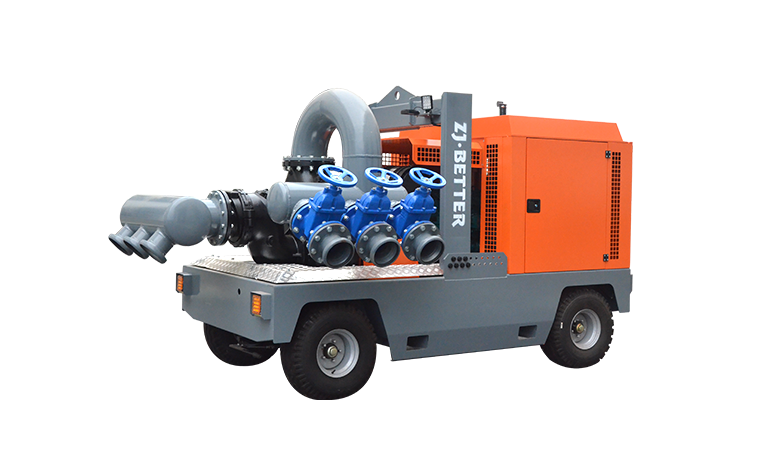
.png)
